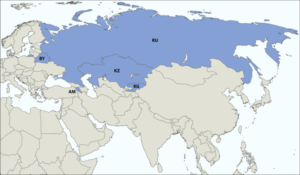One of the new growth projects in South America, and Latin America, is Bi-Oceanic Corridor that will link Brazil with Chile, passing through Argentina and Paraguay.
Conceived since 2019, the corridor will allow a greater ease in exports of Latin American productions through the Atlantic and Pacific Ocean, as well as a greater possibility of new trade agreements with countries that previously had greater logistical difficulties.
With the main objective of bringing greater economic growth to South America, the Bioceanic Corridor is the new promise for the market of production, marketing and export of raw materials and food.

What is the Bi-Ocean Corridor or “Bioceanic Corridor” mega project
The project was started in 2019, with a working group of the foreign ministers of Brazil, Paraguay, Argentina and Chile.
The plan is to create a connection from Mato Grosso do Sul (BR), to the Tarapacá Region (Chile); through Chaco Paraguayan (Paraguay), Jujuy and Salta Province (ARG) and the Antofagasta Region (ARG).

South American production has always been focused on the ports of the Atlantic Ocean, but the market is increasingly focused on the Pacific Ocean, mainly on Asia because of China’s large consumer market. The main objective of the Bi-Oceanic corridor is to facilitate the transportation of cattle and soybean production to these importers.
In addition, it is part of the South American Midwest Integration Zone (ZICOSUL) initiative to increase connectivity between central Brazil and Chile, Paraguay and Argentina, facilitating trade and development of areas, and South America in general.
In this way, they hope to achieve greater diversification of production and increase the value of production chains, since there will be a direct link between production centers and the two export poles (in the Atlantic and Pacific).
It is the construction of a new bridge that allows connecting the already existing transport routes internally in each country along with a direct access to the ports of other countries in oceans to which there was no direct access previously.
The project will have investment from the private sector and the International Bank of the Americas, with a budget of almost US$2,370 billion.
How the Bi-Oceanic Corridor can open the doors of Brazil to China and Chile to Europe
With the existing routes from Chile to its ports on the west coast and from Brazil on the east coast of the continent, it will allow countries to have greater trade relations with other powers at a lower cost. The Bioceanic Corridor project estimates save US$1000 for container exported, about ³ of the current logistics costs.
This will allow a greater productive and commercial diversity. For example, instead of the Brazilian productions that are destined to China (main importer of soybeans from BR) , they have to navigate the Drake Passage, in South America (in the Atlantic Ocean current and with complicated weather conditions) or use the Panama Canal, you can now leave ports in the Pacific and reach Asian markets faster and more easily.
The same logic can be applied to trades between Chile and European countries, for example, being able to access ports in the Atlantic in a more simplified way.
In addition, it is a route that will allow a commercial growth and diversity for South America as a whole.
The future trend of connectivity projects within the Americas
Latin America already has several projects with greater international connectivity, such as BELLA Link – a cable system connecting online South America and Europe – or the Corridors T-MEC and CANAMEX – railways connecting Mexico with the United States and Canada.
The Bi-Oceanic Corridor is a new way of linking Latin American countries internally, allowing their joint growth and encouraging new integration projects.
With the need for greater economic development in Latin America, the number of internal connectivity projects is already growing, such as the new optical cable network in South America.
However, the Bioceanic Corridor has controversy regarding its construction, especially in the indigenous territory of Paraguay, where there is conflicts with the Chaco and Ayoreo peoples in the Amazon forest region.
It is important that economic growth be accompanied by the social development of nations, without social minorities being excluded from trade dynamics.








Be First to Comment